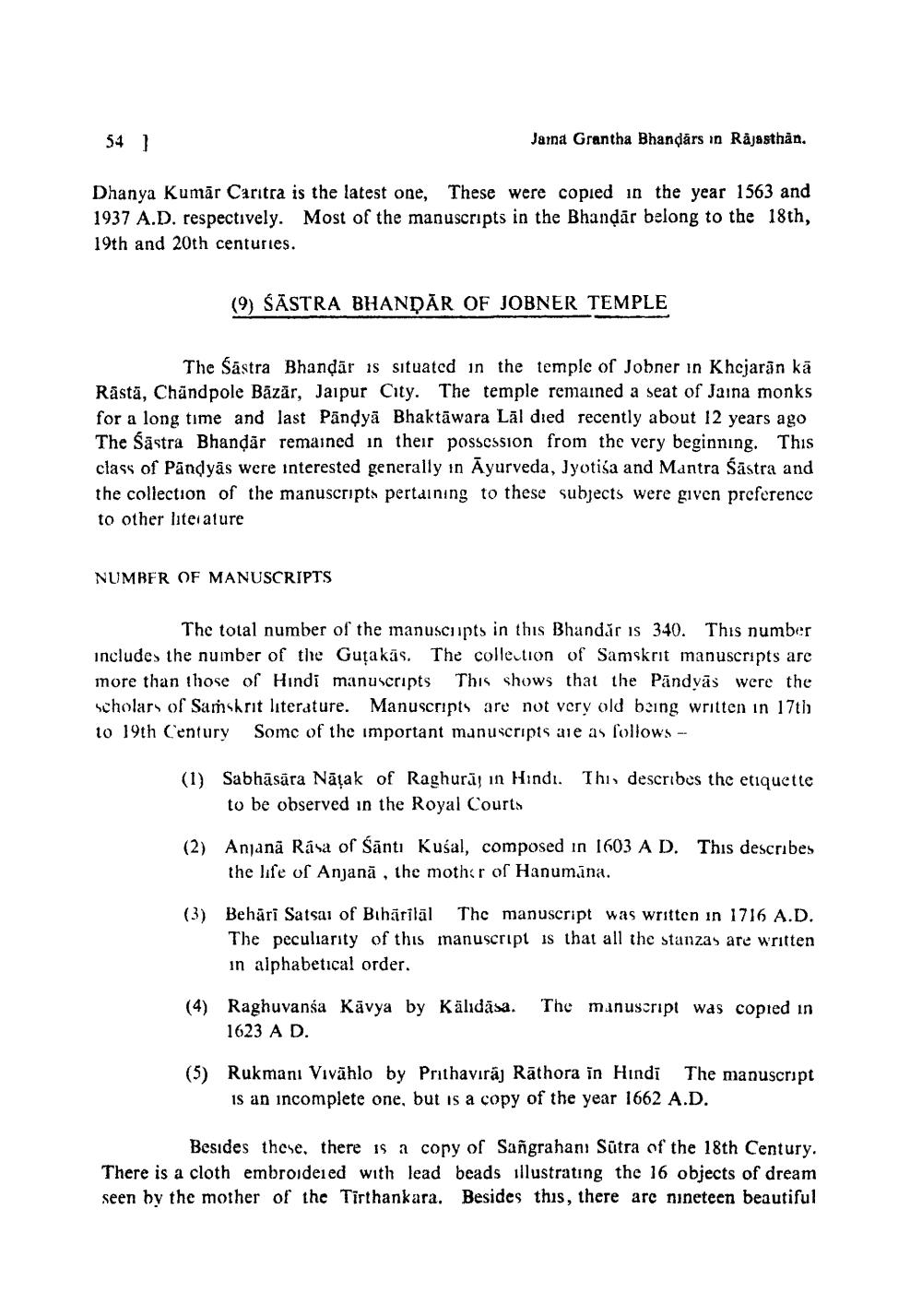________________
54 ]
Jarna Grantha Bhandārs in Rajasthan.
Dhanya Kumār Caritra is the latest one, These were copied in the year 1563 and 1937 A.D. respectively. Most of the manuscripts in the Bhandar belong to the 18th, 19th and 20th centuries.
(9) SÄSTRA BHANDĀR OF JOBNER TEMPLE
The Sastra Bhandār is situated in the temple of Jobner in Khojaran kā Rāstā, Chåndpole Bāzār, Jaipur City. The temple remained a seat of Jaina monks for a long time and last Pandyā Bhaktāwara Lāl died recently about 12 years ago The Sastra Bhandar remained in their possession from the very beginning. This class of Pandyās were interested generally in Ayurveda, Jyotisa and Mantra Šāstra and the collection of the manuscripts pertaining to these subjects were given preference to other literature
NUMBER OF MANUSCRIPTS
The total number of the manuscripts in this Bhandar is 340. This number includes the number of the Guļa kās. The collection of Samskrit manuscripts are more than those of Hindi manuscripts This shows that the Pandyās were the Scholars of Samskrit literature. Manuscripts are not very old being written in 17th to 19th Century Somc of the important manuscripts are as follows --
(1) Sabhāsāra Nājak of Raghurāj in Hindi. This describes the etiquette
to be observed in the Royal Courts
(2) Anjanā Rása of Sāntı Kusal, composed in 1603 A D. This describes
the life of Anjanā , the mothér of Hanumāna.
(3) Behari Satsai of Biharilal The manuscript was written in 1716 A.D.
The peculiarity of this manuscript is that all the stanzas are written in alphabetical order.
The manuscript was copied in
(4) Raghuvansa Kāvya by Kälıdāsa.
1623 AD.
(5) Rukmani Vivāhlo by Prithaviraj Rāthora in Hindi The manuscript
is an incomplete one, but is a copy of the year 1662 A.D.
Besides these, there is a copy of Sangrahan: Sūtra of the 18th Century. There is a cloth embroidered with lead beads illustrating the 16 objects of dream seen by the mother of the Tirthankara. Besides this, there are nineteen beautiful




